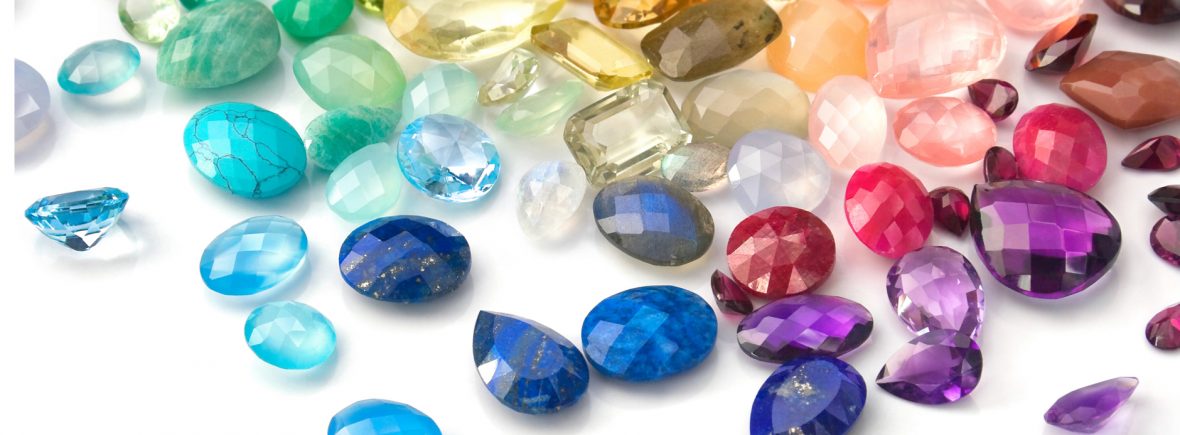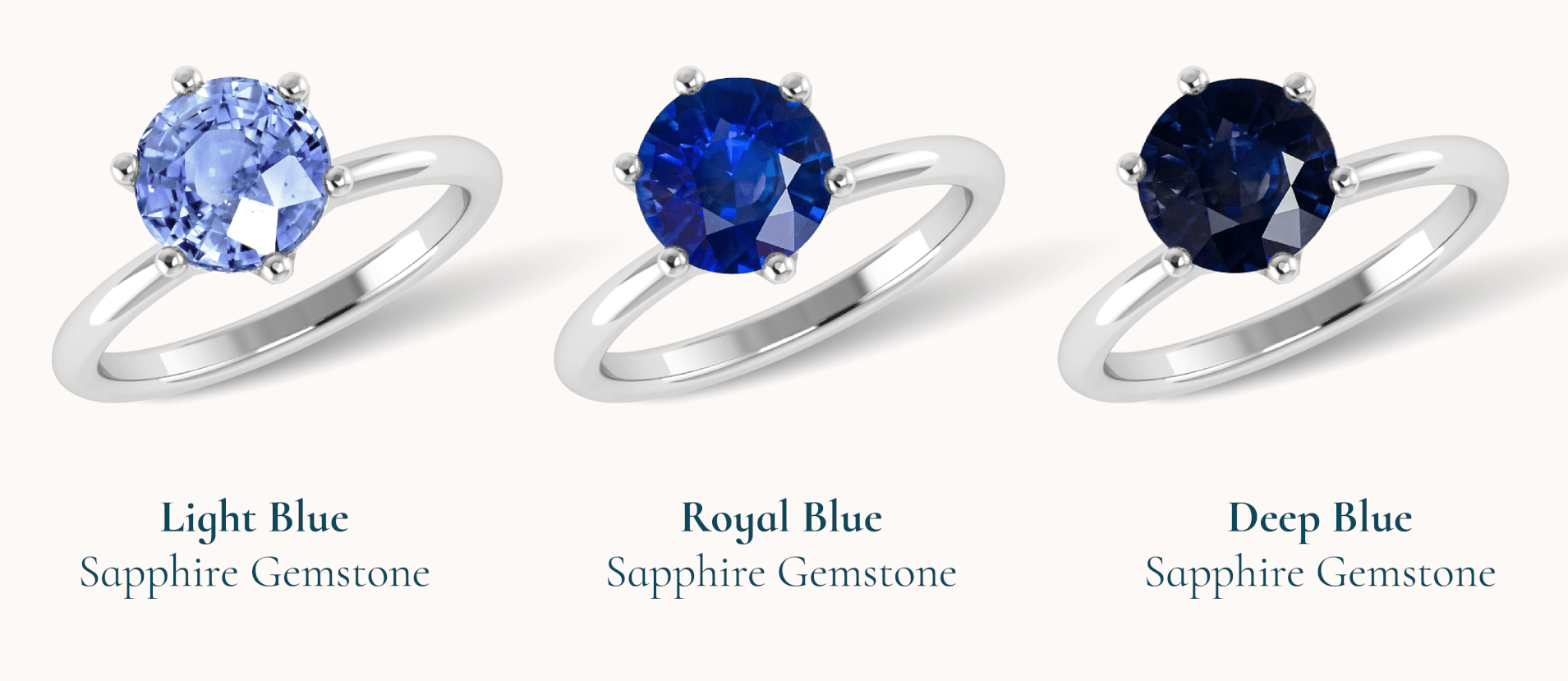Gemstones, with their breathtaking beauty and rich historical significance, have adorned humanity for millennia. These exquisite natural treasures come in a mesmerizing array of colors, each holding a unique story and allure. In this comprehensive guide, we will explore the fascinating history of gemstones, offer expert insights on buying gemstone jewelry, discuss the importance of gemstone hardness, present a diverse list of gemstones, and provide essential tips on caring for these precious gems. By the end of this article, you’ll feel well-informed and secure in your appreciation for the enchanting world of gemstones.
The History of Gemstones
Gemstones have a long and fascinating history that dates back to ancient civilizations. These precious stones were valued not only for their beauty but also for their perceived mystical and healing properties. Throughout the ages, gemstones have adorned royalty, symbolized cultural beliefs, and served as tokens of love and protection.
Gemstones were especially cherished in the Renaissance period, with famous gems like the “Hope Diamond” and the “Sancy Diamond” gaining legendary status. Today, gemstones continue to captivate our hearts, gracing modern jewelry pieces with their timeless elegance.
Gemstone Jewelry Buying Tips
Purchasing gemstone jewelry is a delightful experience, but it requires careful consideration to ensure you’re getting the best value. Here are some essential tips for buying gemstone jewelry:
Buy from Reputable Sources: Choose established and reputable jewelry retailers or certified gemstone dealers known for their quality and transparency.
Learn About the 4Cs: Just like diamonds, gemstones have their own set of quality factors, known as the 4Cs: Color, Clarity, Cut, and Carat Weight. Familiarize yourself with these aspects to make informed choices.
Ask for Certifications: For valuable gemstones, ask for a reputable gemological certification, such as those from GIA (Gemological Institute of America) or AGS (American Gem Society). A certification guarantees the gem’s authenticity and quality.
Consider the Setting: The design and craftsmanship of the setting are crucial. Ensure the gemstone is securely set, and the piece is well-made.
Trust Your Eyes: Trust your instincts and personal taste. Choose a gemstone that resonates with you and fits your preferences.
What to Know About Gemstone Hardness
Gemstone hardness is a significant factor in determining its durability and suitability for different types of jewelry. The Mohs scale of hardness, which ranges from 1 (softest) to 10 (hardest), is commonly used to assess gemstone hardness. Some gemstones have a higher hardness than others, making them more resistant to scratches and wear. Here’s a summary of the hardness levels on the Mohs scale:

Talc: The softest mineral, easily scratched by even a fingernail.
Gypsum: Slightly harder than talc but still quite soft.
Calcite: Can be scratched by a copper penny.
Fluorite: Similar in hardness to calcite.
Apatite: Can be scratched by a knife blade.
Orthoclase Feldspar: Can scratch glass, but not as easily as higher-ranked minerals.
Quartz: One of the most common minerals, scratches glass easily.
Topaz: Harder than quartz but can still be scratched by corundum.
Corundum: Includes gemstones like sapphires and rubies; can scratch most other minerals.
Diamond: The hardest mineral, capable of scratching all other minerals.
In the context of gemstones, hardness is a significant factor because it affects how well a gem can withstand everyday wear and tear. For example:
- Diamonds are the hardest gemstones, making them suitable for all types of jewelry, including engagement rings.
- Sapphires and rubies, both corundum gemstones, are also highly durable and suitable for various types of jewelry.
- Emeralds are relatively softer (7.5-8 on the Mohs scale), which makes them more prone to scratches, so they require careful handling and setting in protective settings.
When selecting gemstones for jewelry, it’s important to consider not only their hardness but also other factors such as color, clarity, and cut to ensure you choose the best gemstone for your desired piece.
A List of Different Gemstones
The world of gemstones is incredibly diverse, offering a wide range of colors, properties, and symbolism. Here’s a list of some popular gemstones:

Diamond: Known as the “king of gemstones,” diamonds are prized for their brilliance, durability, and symbolism of everlasting love.
Ruby: Symbolizing passion and strength, rubies are famous for their intense red color.
Sapphire: With its captivating blue hues, sapphires represent wisdom, loyalty, and elegance.
Emerald: Emeralds, known for their vibrant green color, symbolize renewal, growth, and harmony.
Amethyst: A purple quartz gemstone associated with tranquility and spiritual growth.
Topaz: Topaz comes in various colors and is believed to bring positivity and abundance.
Opal: Opals are admired for their iridescent play-of-color, representing creativity and inspiration.
How to Take Care of Gemstones
Proper care ensures the longevity and beauty of your gemstone jewelry. Here are some essential care tips:
Gentle Cleaning: Use a mild soapy solution and a soft brush to clean your gemstone jewelry. Avoid harsh chemicals and ultrasonic cleaners.
Avoid Abrasion: Store gemstone jewelry separately to prevent scratching. Wrap them in soft cloth or pouches.
Minimize Exposure: Keep gemstones away from direct sunlight and extreme temperature changes, which can cause color fading or damage.
Professional Check-ups: Schedule regular check-ups with a reputable jeweler to ensure the settings are secure and the gemstones are in good condition.
Personalized Gemstone Jewelry
One of the exciting aspects of gemstone jewelry is the ability to personalize it to reflect your unique style and sentiments. Here are some ideas to consider:
Birthstone Jewelry: Incorporate your birthstone or the birthstones of loved ones into your jewelry. Birthstone jewelry holds a personal and sentimental touch, making it a cherished keepsake.
Custom Designs: Work with a skilled jeweler to create custom-designed pieces that reflect your personality and preferences. Whether it’s combining different gemstones or designing a unique setting, the possibilities are endless.
Anniversary or Milestone Jewelry: Mark special occasions with gemstone jewelry. Whether it’s an anniversary, graduation, or significant life event, gemstones can commemorate these moments beautifully.
Conclusion
Gemstones are not just precious stones; they are symbols of beauty, elegance, and profound meaning. By understanding their history, purchasing wisely, appreciating their hardness, exploring the variety of gemstones, and caring for them diligently, you’re immersing yourself in a world of timeless elegance and enchantment.
As you admire the mesmerizing colors and unique properties of your gemstone jewelry, let them be a constant reminder of the remarkable stories they hold, the allure of the natural world, and the meaningful moments they represent in your life. Whether it’s the brilliance of a diamond, the fiery red of a ruby, or the soothing hues of an amethyst, each gemstone carries its legacy, adding a touch of elegance and significance to your every day. Embrace the beauty of gemstones, and let their enduring charm be a cherished part of your own remarkable journey.…





